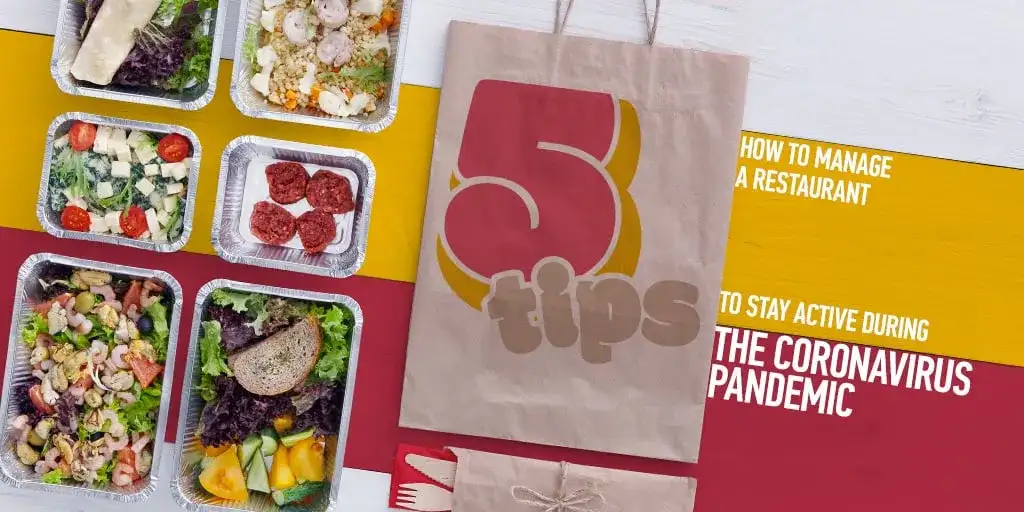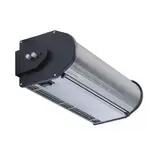
How To Manage A Restaurant: 5 Tips To Stay Active During The Coronavirus Pandemic
These are truly unprecedented times for the foodservice industry. The coronavirus has disrupted normal services, with restaurants forced to shut down as the public is urged to practice social distancing and self-quarantine. As the crisis drags on and the future remains unclear, there is no better time than now to reflect on ways of how to manage a restaurant effectively in the face of a crisis.
1. How to Manage A Restaurant: Look out for your people
The COVID-19 crisis dealt quite the blow to the foodservice industry. Millions of restaurant workers in the country have either been placed on unpaid leave or laid off as restaurants are left with no choice but to reduce or completely halt operations. And for many of these people who live paycheck to paycheck, especially tipped workers and front-of-house employees, this means losing their primary means to sustain themselves and their families, aggravated by the uncertainty of the situation.
Assess the situation to determine the best course of action for your specific operation.
This is a crisis that affects everybody. It hasn’t been easy for small business owners and anyone with a staff to support, a business to keep alive, and bills to pay. The COVID-19 outbreak has left operators with no choice but to make the tough calls. Keeping the business afloat and supporting your staff is not easy, and the harsh truth is not all businesses get through the pandemic unscathed.
So think about what is best for your company and for your people. Look at the situation from both a business and a safety standpoint. For some, it makes sense to simply suspend the entire operation for the time being while some continue to resume their operations with a skeletal staff. Evaluate and exhaust all the options you have on the table. Some use their kitchen to feed the community or at least help their restaurant workers get by.
As painful it is having to lay off workers who are counting on you to protect them from the devastating damage of a health crisis of unbelievable scale, one great gesture is to simply do your very best to connect them to resources that can ease this new burden. Fortunately, a multitude of efforts and initiatives have been launched in order to support workers and small business owners alike affected by the crisis.
There are tons of programs that aim to provide cash assistance, grants, and relief to people in the restaurant industry affected by the COVID-19. Check out ongoing relief efforts that you can tap into here and here.
Practice transparency and communicate procedures to your employees
Keep your staff informed by providing regular updates on the changes being implemented on your operation and potential solutions you are looking into. Send out constant reminders about consistent practice of all health and safety precautions to reduce risks of contracting the virus on and off the job.
Provide clear options to your employees. Your employees may be looking to you for anything to fall back on. Be completely honest and transparent. Sometimes, knowing that you are doing everything in your power to make things better is enough for them. Let them know of your plans about the business and what changes they can expect.
Discuss the options they have. During these times, adjust your expectations and be more considerate. Understand how the crisis can physically, financially, and mentally get in the way of your employees doing their job.
An employee who is ill shouldn’t be allowed to come to work as it can put your staff and your customers at risk. Offer paid sick leave so they don’t have to worry about losing potential income for the day because they couldn’t come in to work. You might want to hold off on asking for a doctor’s note. It is probably impossible to get as healthcare offices and clinics are most likely inundated with patients.
If you have employees who might have to skip work to take care of their children or sick relatives, you can look into the Family and Medical Leave Act or FMLA to assist them in taking up to three months of unpaid leave without worrying about not having a job to go back to. For those who aren’t eligible for the FMLA, work something out with them such as reworking their schedules.
Promote mental health
Advancing the wellbeing and mental health of your staff during these trying times is more crucial than ever. Take it upon yourself to connect them to resources such as hotlines and peer support where they can get the help they need.
Many licensed therapists have started offering free or discounted sessions through social media due to the outbreak. There are also apps such as the Talkspace and BetterHelp that can connect individuals to a therapist who can offer support through text, live chat, or voice communication through mobile or desktop depending on the app. Therapy apps like Calm, Rootd, and Headspace help you meditate and fight through panic and anxiety.
2. How to Manage A Restaurant: Stay informed
The COVID-19 situation continues to evolve, so it is important to stay in the know so you can respond promptly and appropriately to new developments. Be mindful of where you get your information though. There is a lot of misinformation about the COVID-19 virus out there, so make sure to stick with official sources such as Centers for Disease Control and Prevention (CDC), Food and Drug Administration (FDA), and World Health Organization (WHO).
Keep abreast of the latest developments regarding financial support provided by the government and other entities. Research on resources and potential financial assistance that can help you get through and get back up.
The “Coronavirus Aid, Relief, and Economic Security” Act or CARES Act passed last March is part of the federal government’s efforts to address the economic impact of COVID-19. The bill aims to provide financial assistance to individuals and businesses affected by the crisis. The CARES Act will provide an amount of $2 trillion, which includes funding for tax relief and unemployment compensation among many others.
A total of $349 billion is dedicated to 100 percent federally backed Paycheck Protection Program Loans for small businesses that employ not more than 500 employees with few exceptions. Read more about the CARES Act here and the Paycheck Protection Program here.
3. How to Manage A Restaurant: Adjust to the demand
Restaurant management in the coronavirus era involves creative measures. Translate what you do best into a new format that meets the needs of the current times. Right now, it is all about delivery. On-premise dining has been restricted in an effort to contain the spread of the virus. If you haven’t before, it might be time to explore the possibilities of adding delivery and pick-up service to your operation. If you already have a delivery system in place, you may have to tweak it to overcome the limitations that the outbreak has imposed.
If you haven’t integrated a delivery service for your restaurant or are short on manpower, consider using a third-party delivery service. There are many apps that offer a one-stop ordering system for customers. These services can handle the delivery for you so you won’t have to send your own people. If you go this route, choose an app that is popular in your area. Keep in mind that these services carry a wide selection of restaurants that could be major competition for customer attention. At this point, however, third-party delivery services may be overwhelmed, so operators might have to do it themselves in the end.
If you have the staff for it or you already have a delivery system in place, offer curbside delivery instead. Encourage your customers to order through your contact number, your website, or your social media accounts.
In order to manage the demand, set up a time frame for accepting orders and designate a time for your customers to pick them up to minimize interaction. Set up a pick-up system that won’t break social distancing protocols by promoting contactless or limited contact delivery.
Safety is a priority so it is important to limit physical contact and interaction. You can have your driver simply leave the food on the doorstep for your customers to pick up. Simply have them call or text them after the delivery is made so they can grab the food and bring it inside.
Alternatively, you can have the customer pick up their orders at your restaurant. A lot of people would love the chance to get outside of the house, even if it is just for a short while. This is already a great sell to them, and for your part, you can also save on the cost of third-party services. Designate a staff member or two to hand the order to the customer outside. If your inventory and budget allow it, think about throwing in a food item that is deemed high in value for free or a coupon for dine-in visits that they can use when things go back to normal.
Retrofit your menu
Adapt your concept to the current needs of customers. Rework your menu into a small and tailored selection of nutritious and satiating food items that are easy to prepare, cook, and deliver. Offer meals that can be reheated and can stand up to changes in temperature and any problems that may come up during delivery.
An affordable way to put that special menu together is using the ingredients that you already have on hand in your freezer or refrigerator. This way, you won’t have to order as much new inventory and it will be easy to determine how much more items you need in order to meet the demand.
Keep it simple
You might have to trade an intricate presentation for something that’s more practical. Now more than ever, many people are turning to a delicious meal to get through the day or alleviate the stress, so instead of elaborate packaging, you might want to infuse a “comfort food” twist to your offerings.
Encourage tips
Restaurant management in the coronavirus era means preparing for added health risks. Don’t hesitate to encourage your customers to tip your drivers or delivery staff. Your customers very likely know the danger that delivery people face every single day just so they can enjoy delicious meals at the comfort of their homes. And a way for your customers to help and make it worth their while is at least providing generous tips that can go a long way in helping your employees make ends meet.
Offer bulk orders
Evaluate the feasibility of delivering a bulk of meals that can last for days in the freezer. If cooking large quantities of food is not achievable, you can opt for offering packs of several servings of pre-seasoned ingredients so that customers can cook their restaurant favorites themselves.
Get everything right
The COVID-19 situation is no doubt stressful for everybody. Everyone's a little bit on edge, and cabin fever isn’t helping. Restaurant management in the age of the coronavirus involves triple-checking the order before handing it over to your delivery staff to make sure that the food they receive is exactly what they wanted. Takeout and delivery mistakes will be harder to rectify than those made on-premise. While customers probably won’t mind the delay due to the outbreak, they sure won’t appreciate errors after waiting.
Stay eco-friendly
On top of the challenges brought about by the COVID-19 pandemic, it is important to keep your delivery and pick-up efforts eco-friendly too. As much as possible, stay away from using single-use plastics. Since people are eating at home, there’s no need to provide utensils. When it comes to the packaging, consider using compostable materials.
Maintain hygiene and cleanliness
According to a survey by Restaurant Management Solutions, the top factors that customers consider when deciding to order from a restaurant are the employee hygiene and the strict delivery protocols. Increase the frequency of cleaning, sanitizing, and disinfecting your facility. Enforce frequent hand washing and proper food handling. Sanitize cutting boards and food prep surfaces in between uses. While the coronavirus has not been found to spread through food, it is still essential to practice food safety measures at all times in order to protect the health of your customers and your staff. Make sure that your customers know the measures you are taking to keep them safe.
4. How to Manage A Restaurant: Keep in touch with your client base
Provide regular updates
Efficient restaurant management is maintaining communication. Keep your customers informed of what you’re up to. A lot of people are looking for ways to support local businesses, and chances are, they want to know how they can help you or how they can help through you. So make sure to stay connected to your patrons through your social media channels to let them know of how you are coping with the crisis.
Use the time to improve your online presence
Since we’re going digital and contactless, your website and other digital channels should be working perfectly. Let people know of how the crisis is affecting your business, how you are supporting your staff, and the changes they should expect.
Make sure your website is running as it should. The text and the images, especially your menu, should be displayed properly on desktops, tablets, and smartphones.
This might also be a good time to put your website under the microscope and figure out ways it can be better. Maybe you need to add new content, write some blog posts, make employee profiles, or shine a spotlight on the brave essential workers that keep your business running through this crisis. Consider setting up Google My Business and upping your SEO game so you are easily searchable online.
Help customers stay sane during the quarantine
Use this time to amp up your social media game and give customers an outlet to make self-quarantine enjoyable or at least bearable. Now that people are asked to stay home in an effort to prevent the spread of the COVID-19 disease, many have chosen to spend their time learning to cook or bake for the first time through the internet, so consider making videos that provide a step-by-step guide to cooking some of your popular dishes or any recipe videos and fun, uplifting content. You can even try out the rapidly-growing platform TikTok to tap into a new audience.
Stay true to your concept
Practicality is the name of the game, so, unfortunately, not all business models can easily adapt to the situation. Fine dining and full-service establishments can still find a way to serve their community and preserve jobs for their employees without shedding what their business is all about.
Get creative and find ways to bring the on-premise dining experience into the homes of your customers. Maybe you can deliver the food in beautiful premium packaging or adjust your offerings to fit at-home luxury.
5. How to Manage A Restaurant: Do your part
Many operators are launching charitable initiatives to raise money for their workers or for the struggling members of the industry hit hardest by the pandemic. Reach out to restaurant influencers or team up with your colleagues in the industry or anyone looking to make a positive impact.
6. How to Manage A Restaurant: Preparing for what comes next
Proper planning and emergency funds
As we continue to gain a better understanding of the crisis, we also develop solutions that can help us better respond to a similar situation. Restaurants would benefit from developing a Cause, Effect Resolution that contains every conceivable problem that operators can face in their operation--from the simplest to the most complex such as a pandemic, and outlining potential solutions for each scenario.
Now more than ever, it is important to think about how you can be financially ready for something drastic as the COVID-19 pandemic. Be serious about having emergency funds to dip into when disaster strikes. If you have been on the fence about setting aside thousands of dollars for emergency, the current situation is truly an eye-opener.
Emergency fund contributions should be part of your budget, and an automated savings plan is the best way to keep it up. Depending on your unique circumstances, you should have approximately three to 12 months worth of expenses set aside for emergencies, as per Wisebread.com. Analyze your cash flow statements with your bookkeeper or accountant.
Adapting to the new normal
This is a major turning point not just for the restaurant industry, but for the world. Big changes are surely afoot as we discover what things look like on the other side of the COVID-19 crisis. When all of this ends and we finally resume our lives, we can expect to step into a new normal with a market with new needs and demands. And to stay relevant might mean reinventing your foodservice operation in ways you hadn’t thought you were going to go. The old restaurant management handbook might need some revising.
In the abovementioned RMS survey, it is found that more customers are likely to support restaurants that have clearly defined hygiene and delivery protocols to make sure that they are taking the steps to keep them safe.
Another survey of more than 8,500 restaurant customers by VIP Insiders revealed that while customers are optimistic about the recovery of the restaurant industry from the COVID-19 beating, they still expect to see major changes reflected on how restaurants operate in light of the outbreak. The survey shows that beyond social media efforts, customers may be more inclined to visit a restaurant with a great loyalty and rewards program.
Experts predict that many restaurants affected by the coronavirus might not be able to open again, or at least not for a while. The restaurants that stay open will likely continue to operate at reduced capacity. Either way, operations able to get to the other side will have a lot of business.
Delivery will be more integral than ever. A survey by Inspire PR Group and Illuminology revealed that while on-premise dining interest will be revived when the quarantine protocols are lifted, it might be significantly less than pre-COVID-19. Many customers will err on the side of caution and will still appreciate the convenience of delivery.



